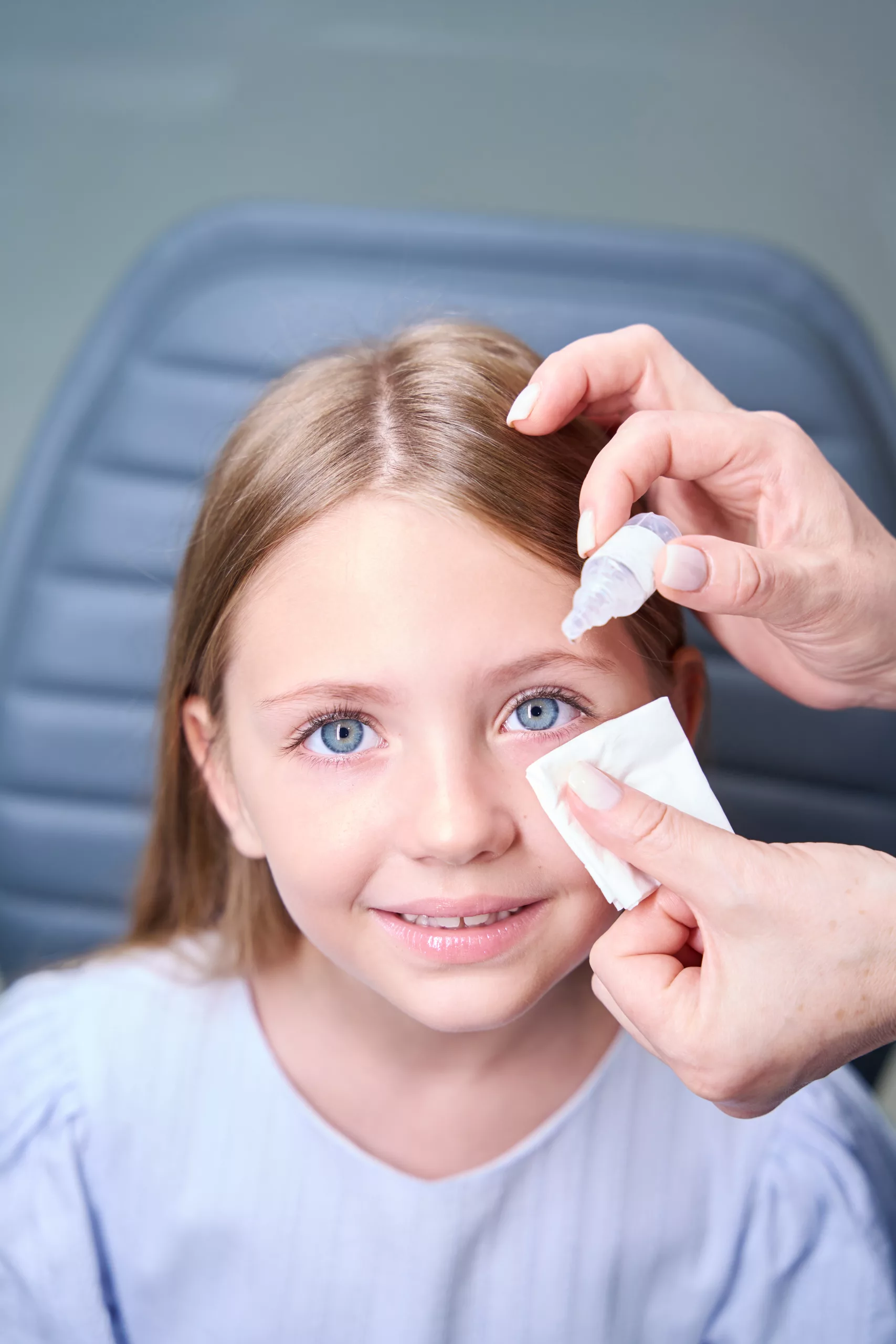Why Is Eye Patching Important in Treating Amblyopia in Children?
Introduction
Amblyopia, commonly known as “lazy eye,” is a condition where one eye does not develop properly, leading to reduced vision that cannot be fully corrected with glasses or contact lenses. It typically begins in infancy or early childhood when the visual system is still maturing. The brain favors one eye over the other, causing the weaker eye to receive less visual stimulation and thus not develop properly.
Understanding Amblyopia
Amblyopia can develop due to several factors:
- Strabismus (Crossed Eyes): Misalignment of the eyes causes the brain to suppress the image from one eye to avoid double vision.
- Refractive Errors: Significant differences in prescription between the eyes can cause one eye to be blurry, prompting the brain to rely more on the clearer eye.
- Visual Obstructions: Conditions like cataracts, ptosis (drooping eyelid), or other factors that block or blur vision in one eye during early childhood can lead to amblyopia.
Early detection and treatment of amblyopia are crucial because the brain’s visual system is most adaptable in childhood. If left untreated, amblyopia can lead to permanent vision impairment in the affected eye.
Role of Eye Patching
Eye patching is a fundamental treatment method for amblyopia that aims to strengthen the weaker eye and improve its visual acuity. Here’s how it works:
- Visual Deprivation: By covering the stronger eye with a patch, the brain is deprived of its preferred visual input. This deprivation forces the brain to rely more on the visual signals from the weaker eye, stimulating its neural pathways and encouraging visual development.
- Encouraging Neural Plasticity: During childhood, the brain exhibits high levels of neural plasticity, meaning it can reorganize and adapt in response to new stimuli. Eye patching capitalizes on this plasticity to enhance the connections between the weaker eye and the brain’s visual cortex, facilitating improved visual function.
- Promoting Visual Acuity: Over time, consistent use of an eye patch can lead to significant improvements in visual acuity in the weaker eye. The duration and frequency of patching sessions are typically prescribed based on the severity of amblyopia and the child’s response to treatment.
Effectiveness of Eye Patching
Numerous studies have demonstrated the effectiveness of eye patching in treating amblyopia, particularly when started early and conducted consistently. Factors influencing its effectiveness include:
- Compliance: Ensuring that the child wears the eye patch as prescribed is crucial for successful treatment outcomes.
- Monitoring Progress: Regular eye examinations by an ophthalmologist or optometrist are essential to assess improvement and adjust the treatment plan if necessary.
- Combination Therapies: In some cases, eye patching may be combined with corrective lenses (glasses or contact lenses) or other interventions to optimize visual outcomes.
Challenges and Considerations
While eye patching is highly effective, it can present challenges for both children and their caregivers:
- Comfort and Compliance: Some children may initially find wearing an eye patch uncomfortable or may resist wearing it altogether. It is important for parents to encourage and support their child during the adjustment period.
- Social and Emotional Impact: Wearing an eye patch can sometimes lead to self-consciousness or concerns about peer reactions. However, efforts are continually made to design patches that are more comfortable and aesthetically appealing.
Conclusion
In conclusion, eye patching is a critical component of treating amblyopia in children by stimulating the weaker eye and promoting visual development during the critical early stages of life. Early detection and intervention are key to maximizing the benefits of eye patching, potentially leading to significant improvements in visual acuity and overall eye health. By understanding the importance of eye patching in treating amblyopia, parents and caregivers can actively participate in their child’s eye care journey, ensuring the best possible outcomes for their vision and future well-being. Regular communication with healthcare providers and a supportive environment are essential to overcoming challenges associated with eye patching and ensuring successful treatment outcomes for children with amblyopia.
World Eye Care Foundation’s eyecare.live brings you the latest information from various industry sources and experts in eye health and vision care. Please consult with your eye care provider for more general information and specific eye conditions. We do not provide any medical advice, suggestions or recommendations in any health conditions.
Commonly Asked Questions
Coverage for eye patching treatment may vary depending on your insurance provider and the specific terms of your policy. It is advisable to check with your insurance company regarding coverage for amblyopia treatment.
Improvement in visual acuity can typically be observed within several weeks to months of starting eye patching, although individual responses may vary.
Temporary discomfort or skin irritation around the eye area is possible, but serious side effects are rare. Proper patching techniques and materials can minimize these risks.
Glasses may be prescribed if there is a refractive error (e.g., nearsightedness, farsightedness) in either eye. They are often used alongside eye patching to achieve optimal visual correction.
Regular eye exams by an ophthalmologist or optometrist are recommended to monitor progress and make adjustments to the treatment plan as needed.
Yes, alternatives include using atropine drops to blur the vision in the stronger eye or vision therapy exercises designed to strengthen the weaker eye.
Encouraging and incentivizing the use of the eye patch, making it a part of daily routines, and explaining its importance in improving vision can help overcome resistance.
While eye patching is most effective in children due to their brain’s higher neural plasticity, some improvements in vision have been observed in adults with amblyopia, though the outcomes may vary.
The duration of eye patching sessions varies depending on the severity of amblyopia and the child’s response to treatment. Typically, it ranges from 2 to 6 hours per day, as prescribed by an eye care professional.
Eye patching is most effective when started early, ideally before the age of 8 years, while the visual system is still developing.
news via inbox
Subscribe here to get latest updates !







